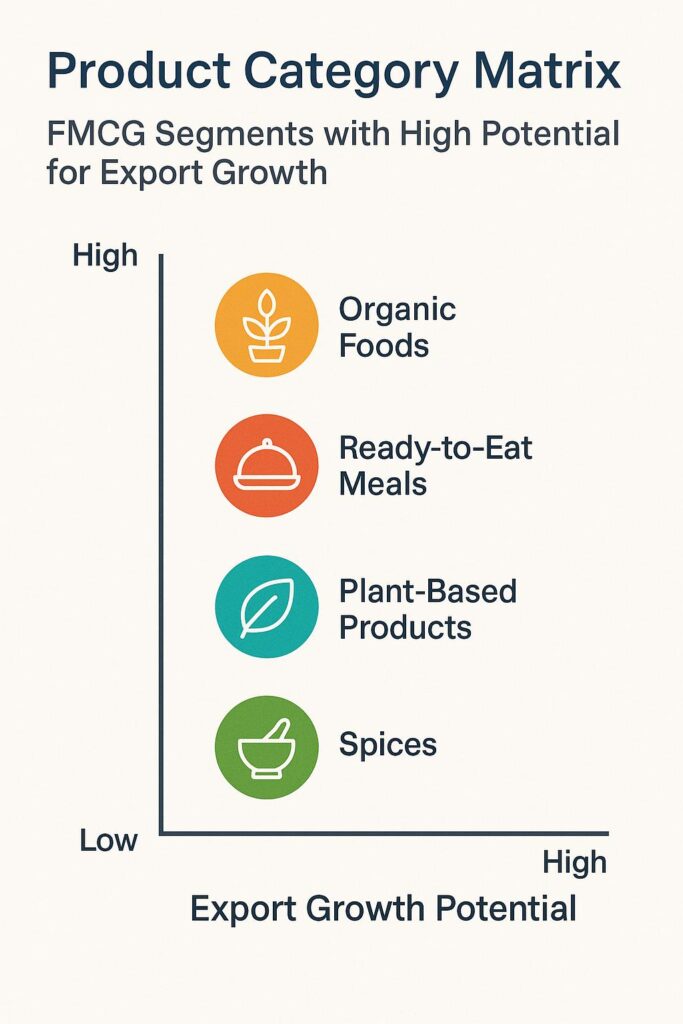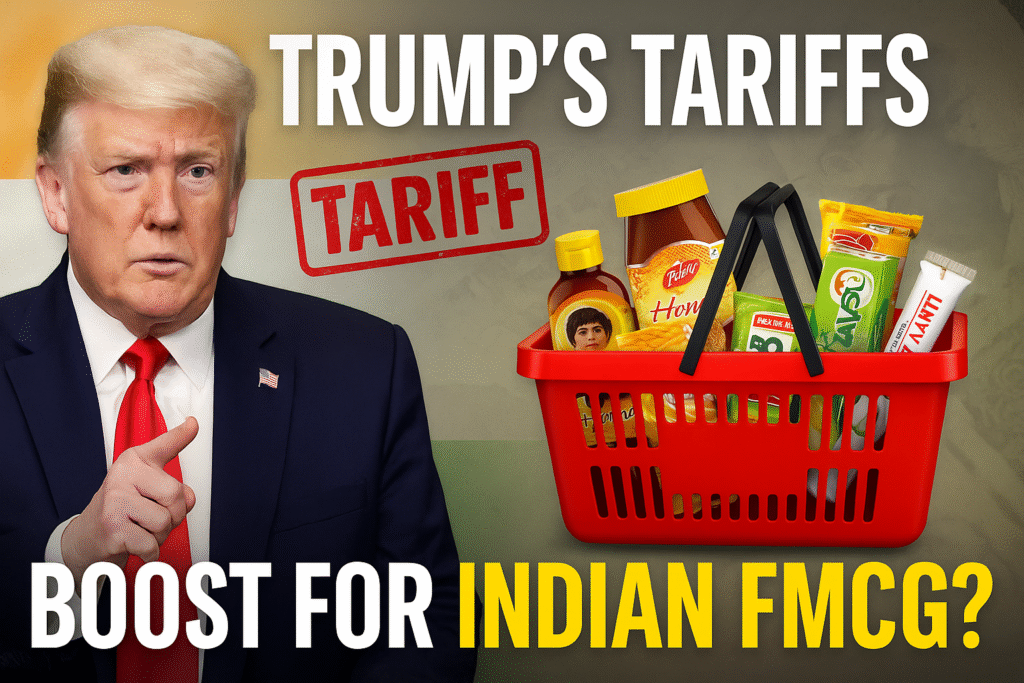In the wake of President Donald Trump’s sweeping tariff announcements, a fascinating market narrative is unfolding in India. While many sectors have tumbled amid fears of trade war repercussions, Indian Fast-Moving Consumer Goods (FMCG) stocks have shown remarkable resilience—and might even be positioned to benefit in this new economic landscape.
Let’s unpack why your FMCG investments could be sitting prettier than you think.
📉 The Tariff Tornado: Breaking Down the Duties
What Trump Announced
- 10% baseline tariff on virtually all U.S. imports, effective April 5, 2025.
- Higher “reciprocal” tariffs on 57 countries (effective April 9):
- India: 26%, EU: 20%, Japan: 24%, China: 34% (Reuters).
And that was merely the appetizer.
China lobbed its own tariff grenades. The U.S. retaliated with even heftier levies, escalating the situation until—believe it or not—those rates ballooned to a staggering 145%.
90-Day Pause
- A 90-day suspension of reciprocal hikes (except on China) to allow urgent negotiations (Investopedia).
- Deadline: July 9, 2025 — just over three months to clinch deals and lock in trade flows.
🌾 FMCG’s Surprising Stability Amid the Storm
While pharmaceutical stocks took a beating despite their temporary exemption from tariffs, FMCG companies displayed remarkable resilience.
In the Nifty FMCG index, 3 of the 15 members were able to trade positively even amidst the broad sell-off. Stocks of Hindustan Unilever (HUL), Britannia, and Godrej Consumer Products showed increases of up to 0.6%, providing strength in an otherwise fragile market.
🧃 Why Are FMCG Stocks Weathering the Storm?
The answer lies in the fundamental business model of FMCG companies. Unlike export-heavy sectors, FMCGs are mostly domestically focused:
“These firms concentrate mainly on local markets and have limited involvement in exports, protecting them from external disruptions like trade tariffs or sanctions.”
Explainer
Think of Britannia’s cookies: almost all baked and sold in India. U.S. duties on exports? Irrelevant.
Meanwhile, a U.S. supermarket choosing Indian snacks over Chinese ones saves 8 percentage points in duties.
“The US market will look to de-risk its overdependence on China, and India must step in to fill that vacuum,” says Ravi Saxena, CEO & Founder of Wonderchef.
💼 Investor Sentiment: The ‘China Plus One’ Buzz
Markets love narratives. And the “China Plus One” strategy is the flavor of the season. FMCG stocks could ride this wave, especially as investors hunt for growth stories in a high-inflation, low-growth global environment.
Already, stocks like HUL, Godrej Consumer Products, and Tata Consumer have shown resilience. If export-led growth picks up, valuations could go from “stable” to “sizzling.”
“The China Plus One strategy is more than just a buzzword now. It’s driving real capital allocation decisions.” — Manish Gunwani, CIO, Nippon India Mutual Fund
🟨 A Golden Opportunity
Here’s where it gets interesting. With China facing 145% tariffs compared to India’s 26%, the playing field is shifting in India’s favor.
“Indian exporters may recover faster and gain market share due to the higher tariffs on China, potentially giving India a competitive edge,” notes Kanishk Maheshwari, Co-founder, Primus Partners.
⏳ The 90-Day Window: Time to Act
Trump’s administration has paused reciprocal hikes for 90 days. That window is a golden gate. If Indian FMCG companies can ramp up quality, packaging, and logistics, they can steal share from pricier Chinese rivals.
“India must swiftly leverage the 90-day tariff pause by boosting its exports, securing favourable trade terms, and solidifying its position as a reliable alternative to China in global supply chains,” urges Chaudhary Dev Pratap Singh, Founder, Univision Foods.
🧂 Which Categories Shine Brightest?
Not every FMCG segment is a golden ticket. But based on export data—$76.17B in FY22 rising to $77.52B in FY24—the standout categories include:
- Organic foods
- Ready-to-eat meals
- Plant-based products
- Spices
- Herbal personal care
These are areas where India’s quality credentials and heritage branding resonate with global consumers.
Explainer
Take an organic spice blend. A U.S. retailer sourcing turmeric from India now benefits from lower duties and “clean label” appeal, making Indian suppliers more attractive than high-tariff Chinese competitors.

🧭 Strategic Moves: Turning a Window into a Highway
For investors and companies alike, the path forward involves three core strategies:
- Quality and Compliance Focus
“The US buyers demand uninterrupted supply and adherence to the highest global standards—something we must strengthen rapidly,” says Saxena.
- Supply Chain Resilience
Investment in automation, packaging tech, and quality assurance is vital to be seen as a reliable alternative to China.
- Diversification
While the US opportunity is huge, wise companies are diversifying export destinations to reduce market risk.
🚢 Final Word: From “China Plus One” to “India Prime”?
“Global companies are re-evaluating their supply chains. With tariffs on Chinese goods, India becomes a natural alternative for certain FMCG categories.” — Radhika Rao, Economist, DBS Bank
If Indian companies execute swiftly, FMCG could emerge as the star sector—riding a narrative shift from “China Plus One” to “India Prime.”
💬 Over to You
Are you tweaking your portfolio in light of these tariff tremors?
Which FMCG stock do you think will race ahead once global buyers start “de-risking” from China?
Let’s swap notes in the comments below!

